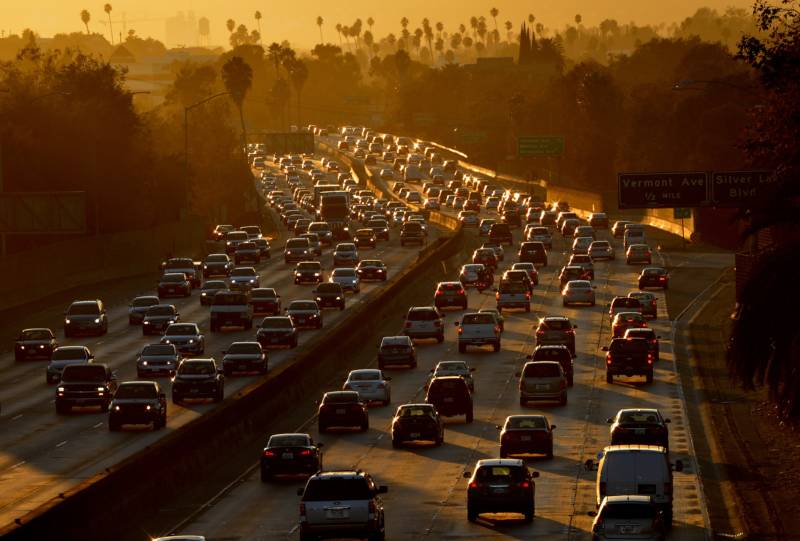California had the slowest recorded growth rate in its history last year as the country’s most populous state was hit by a slowdown in immigration and a sharp decline in births.
California Inches Toward 40 Million People, But Growth Rate Slows

Estimates released Wednesday show California had 39.9 million people as of Jan. 1, adding nearly 187,000 people for a growth rate of less than half a percent — the lowest since 1900, when the state began keeping tabs. And while thousands lost their homes after last year’s deadly wildfire in the northern part of the state, initial estimates show most people shuffled to cities closest to the blaze.
California’s population has been creeping toward 40 million people, viewed as a milestone for a state that began as a frontier outpost and now boasts the world’s fifth-largest economy. While the state will surely reach that peak, officials on Wednesday noted the latest estimates should temper expectations for robust growth as the number of births decline and the number of deaths rise due to an aging baby boomer population. Meanwhile, immigration from Mexico and Central America has also slowed.
“We see that as a process of maturity,” said Ethan Sharygin, a demographer with the California Department of Finance.
The population of Los Angeles, the country’s second-largest city, saw little change, with a population of just over 4 million people.
Chico, in Butte County, added more than 19,000 people, a whopping 20% increase. But that was prompted by tragedy, as the nearby town of Paradise lost 83% of its population after the most destructive wildfire in state history.
“In a single word, it’s been overwhelming,” said Mark Orme, Chico’s city manager, of the overnight population growth.
The college town, home to California State University-Chico, has been affected broadly, including increases in toilet flushes and volume of trash. Orme also said traffic collisions are up 24%. Traffic is up about 25% on average and as high as 77% in some places, he said.
“In Chico, the quality of life, one aspect of that is you don’t have to wait in traffic,” Orme said.
The fire destroyed more than 14,600 housing units. But Sharygin said most of those people stayed in California. Only about 400 left the state, according to initial estimates.
“People were just reacting immediately to the loss of a home and finding a short-term solution,” he said. “I don’t think we can make any claims right now about what happens in the first quarter of this year.”
In all, California lost nearly 24,000 units of housing in 2018, largely due to wildfires. At the same time, roughly 77,000 new housing units were built throughout the state, amounting to more than 4.2 million total units, a 0.6% increase.
Despite the slowdown, California remains by far the country’s most populous state. Texas at No. 2 is still shy of 30 million people.
The San Francisco Bay Area is the state’s fastest-growing region. A separate recent analysis by the U.S. Census Bureau shows that the population of the nine-county region grew by over 600,000 between 2010 and 2018— a nearly 8.5% increase, or about 1% growth per year — outpacing the growth rate in any other part of California.
State officials said Wednesday they expected the state’s birthrate to decline, but they were surprised by how much: More than 18,000 fewer births than the previous year. Tina Daley, chief of California’s Demographic Research Unit, noted teen pregnancy rates are declining and, in general, people are waiting longer to have children.
What has most surprised researchers, Sharygin said, is that fewer people are coming to California from other countries, especially neighboring Mexico, where birthrates are higher. Now, he said, more people are coming from places like China, where birthrates are lower.
The new population estimates come as the state is preparing for the 2020 national census, an important headcount used to distribute federal tax dollars and determine congressional representation. State officials are concerned that many Hispanics won’t be counted if the Trump administration succeeds in placing a citizenship question on the census form.
California has the largest Hispanic population in the country with more than 15 million people, according to the U.S. Census Bureau. State Attorney General Xavier Becerra has filed a lawsuit seeking to block the question.
State officials expect California to continue to grow, predicting the state’s population could top 50 million by 2055, but they also predict it will join the ranks of Japan and other European countries, where deaths outnumber births.
